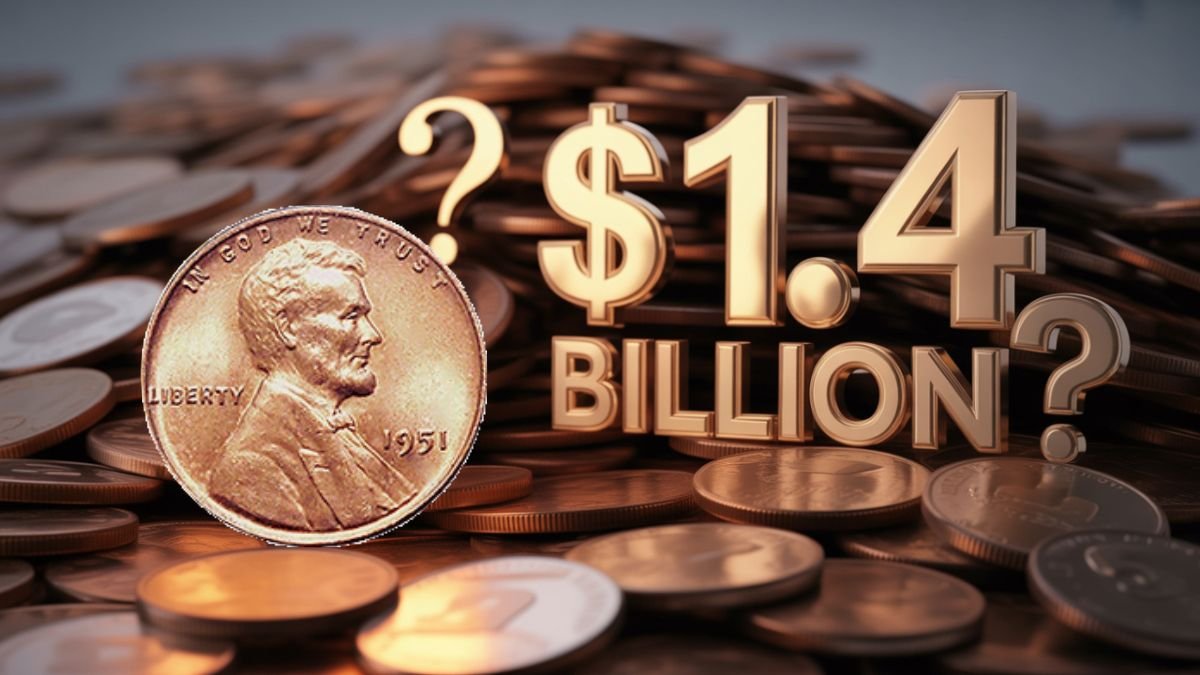Whenever we make a purchase at a shop, a dhaba, or a roadside stall, we often don’t pay much attention to the change we receive. A five-, ten-, fifty-paisa coin, or even an old one-paisa coin, seems worthless to us, and we don’t even consider it a potential change. But did you know that an old Lincoln Wheat Penny from the United States is now worth $1.4 billion (approximately over Rs. 11,000 crore)?
This is bound to surprise you. How can a seemingly ordinary one-cent coin be worth billions of dollars? And the biggest question: is this coin still in circulation? Could it be in your pocket or piggy bank? Let’s learn the full story of this rare and unique coin.
What is the Lincoln Wheat Penny?
The Lincoln Wheat Penny is a very famous American coin, first introduced in 1909. This coin was minted to commemorate President Abraham Lincoln’s 100th birth anniversary.
This coin features Abraham Lincoln’s face on the obverse and wheat ears on the reverse. This is why it’s called the “Wheat Penny.”
Significantly, this was the first American coin to feature a real president. Previously, American coins featured only symbols or fictional figures.
Why is this coin so valuable?
- The question arises: why is this one-cent coin worth billions of dollars? The main reasons are:
- Rarity: This coin was minted in very limited numbers over a few years.
- Minting Errors: Some coins had printing or minting errors. Such coins are considered extremely rare, increasing their value significantly.
- Historical Significance: Being issued in memory of a great leader like Abraham Lincoln further enhances its historical and emotional significance.
- Collective Demand: Numismatists worldwide seek out such coins. When demand is high and availability is low, prices automatically skyrocket.
The $1.4 Billion Specialty
Not every Lincoln Wheat Penny is worth billions. Most pennies are generally priced fairly well. However, coins from certain years and with specific mint errors are considered to be worth this much.
A particular 1943 Lincoln Wheat Penny, believed to have been mistakenly minted in copper when most coins that year were struck in steel, is extremely rare today. This coin is famous for fetching bids of up to $1.4 billion at auction.
Is this coin still in circulation?
Now the real question – is this coin still in circulation?
Technically, yes. The US government never officially removed them from circulation. This means they could still be circulating somewhere.
But in practical terms, the chances are very low. Most rare Lincoln Wheat Pennies are now held by collectors, museums, or auction houses. However, there are occasional reports of people finding these coins in small change.
How do people find them?
Many people in the US and around the world still carefully examine their coins and old change. Collectors always keep an eye on these items.
- They carefully look for the year and mint mark (e.g., “D” for Denver Mint, “S” for San Francisco Mint).
- They check the coin’s material and weight.
- They look for any minting errors (e.g., double-printed letters).
Could someone in India have one?
This coin is from the United States, so it’s highly unlikely that it’s found in the possession of ordinary people in India. However, such a coin could reach India through international transactions, collections, or the import and export of antiques.
Many people in India also pursue numismatics (coin collecting) as a hobby or investment. Such collectors frequently buy and sell foreign coins.
How to evaluate a coin?
If you have an old Lincoln Wheat Penny, immediately check the following:
- Year: Coins, especially those from 1909, 1914, 1922, 1931, and 1943, are considered rare.
- Mint Mark: Some coins with “S” and “D” marks are more valuable.
- Material: Whether or not the coin has been minted on copper or steel.
- Condition: The more new and shiny the coin looks, the higher its value.
Can an ordinary person really become a billionaire?
In theory, yes. If an ordinary person accidentally finds such a rare coin in their change, they could become a billionaire by selling it at auction.
But this possibility is extremely low. Nevertheless, there are numerous examples around the world where people have found coins worth millions in their piggy banks or old coin boxes.
The World of Collectors
Coin collecting is a huge industry. Rare coins sell for millions and even millions of dollars at auction houses, online marketplaces, and numismatic shows.
The Lincoln Wheat Penny is just one example. There are thousands of coins and notes in the world whose value will astound you.
Conclusion
The Lincoln Wheat Penny teaches us to never underestimate something small or ordinary. Sometimes even a simple coin can change your life.
While not everyone is going to find a $1.4 billion coin, it’s fascinating to learn how history and rarity can turn a simple piece of metal into a priceless treasure.
So the next time you find an old coin in change, take a closer look at it.
FAQs
1. What is the Lincoln Wheat Penny?
A. The Lincoln Wheat Penny is a U.S. one-cent coin first minted in 1909 to honor President Abraham Lincoln. The reverse side features wheat stalks, which gave it the name “Wheat Penny.
2. Why is the Lincoln Wheat Penny so valuable?
A. Certain editions of the Wheat Penny are extremely rare due to minting errors, limited production years, and historical significance. These rare coins can fetch millions—or even billions—at auctions.
3. Which Wheat Penny is worth $1.4 billion?
A. The most valuable is a 1943 Copper Lincoln Wheat Penny, mistakenly struck in copper instead of steel during World War II. Its extreme rarity has made it one of the world’s most valuable coins.
